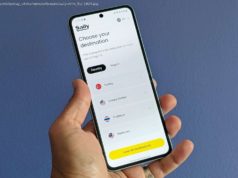Learn how to show vulnerability as a leader and facilitate communication in order to complete your projects and meet your goals as a team.
Join the DZone community and get the full member experience. Just like a tortoise hides inside its shell and a porcupine’s sharp quills leap to attention when they sense danger, we human beings also put on protective armor when we feel threatened. Risky situations, anxiety from the unknowns, and the danger of being exposed evoke the same emotional response as the fear of being chased by a predator. We feel vulnerable. But instead of embracing vulnerability, accepting our fears, and leading with curiosity, we put on a shield of protection. We project confidence even when we are scared, speak with surety even when we are unsure, hide our mistakes with the fear of disapproval and avoid confrontation to save ourselves from the risk of emotional exposure. Trying to keep up with this image turns into a constant fight with ourselves since it’s not who we really are. Instead of spending our mental energy in doing the right thing, we spend it in trying to be right. We can either be vulnerable and form meaningful relationships or hide behind our protective armor where others cannot see our true selves. Creating an image that we are perfect, we have all the answers and that we are never wrong stifles our own growth and those of others around us. Vulnerability isn’t letting it all out, burdening others with our deep-seated fears, or telling stories that make others uncomfortable. It requires establishing healthy boundaries in which we share out of our desire to find answers, encourage others to open up, and inspire the free flow of information with the courage to accept our limitations and the mindset to learn and grow. Our motivation behind vulnerability comes from knowing where we are, where we want to be, and accepting that we can’t do it alone. It’s in telling others we need them along the way. Growing up, we learn to hide our real feelings and put on a perfect show. We are being told that expressing “what we lack” is a sign of weakness and to succeed we need to pretend “we have what it takes.” No wonder as we enter the workforce, we carry this mindset with us. When tasked with a new project that we don’t understand, we are too afraid to ask clarifying questions with the belief that asking questions will be considered a sign of incompetence. We prefer “projecting confidence” over “seeking clarity.” When giving a presentation for the first time to a group of people, we decide to do it alone with the belief that asking for help is a sign of weakness. We assume “building credibility” implies “going it alone.” We do not speak up when we disagree or avoid difficult conversations to avoid the risk of emotional disclosure required to have authentic conversations. We think “going with the flow” is a way to avoid hurting others and “gain respect.” Always putting on protective armor prevents us from building meaningful relationships. We spend our energy keeping up with our false image instead of gaining trust by letting our true selves be seen. Vulnerability is not weakness. It is strength. It’s the courage to let our guard down, courage to be seen, courage to accept we don’t know, courage to acknowledge mistakes, and the ultimate belief that we are not perfect, we are always a work in progress. We connect with other real human beings, those who have flaws just like us. When we show vulnerability, we signal “it’s ok to be who you are, there’s no need to hide”. It invites others to speak up, accept their mistakes and seek help when they don’t know something. Together it’s committing to a path of learning and growth as opposed to building a culture of pretense. When leaders embrace imperfection by accepting vulnerability, they empower people in their organisation to reciprocate. They create a culture in which new ideas are born, people are encouraged to experiment, learn from their failures, and try new strategies instead of sticking with the status quo and hiding behind their failures. Brene Brown says “Vulnerability is the birthplace of innovation, creativity, and change. To create is to make something that has never existed before. There’s nothing more vulnerable than that. Adaptability to change is all about vulnerability.” Innovation is not born out of perfection, it’s the gift of imperfection. Leading with vulnerability isn’t easy and it doesn’t come to us naturally. Our years of training to think of vulnerability as a weakness aren’t going to go away in a day. That’s why we need the courage to practice it, to fail and try again. There will be moments of confusion – am I being too vulnerable or too less, fear of what others will think, maybe even a feeling of shame in accepting it, but showing vulnerability is not getting past these feelings.






